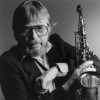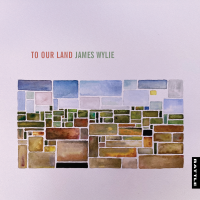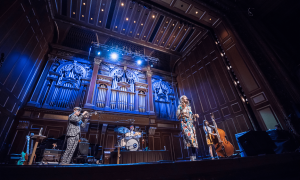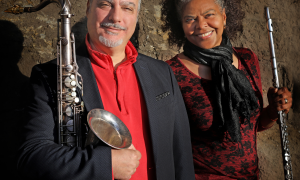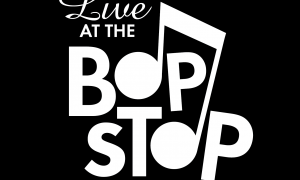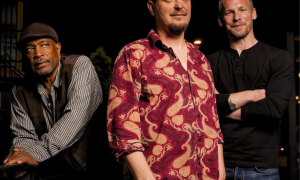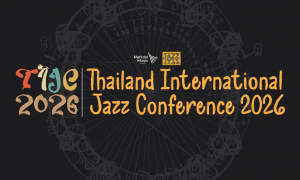Maybe, but I'm guessing that the singles by Boots Brown and the anonymous horns were an attempt by RCA to have them pass as a Black R&B band on jukeboxes in urban bars and clubs. The horns in 1952 were, in fact, all white: Shorty Rogers (tp), Milt Bernhart (tb), Bud Shank (as), Jimmy Giuffre (ts), Gerry Mulligan (bar), Marty Paich (p), Jimmy Wyble (g), Howard Rumsey (b) and Roy Harte (d). Jo Jo Johnson (also known as Shad Turner) was credited on a vocal. Since Johnson and Turner don't appear to have recorded anything else, I'm guessing that the name was a pseudonym for one of the guys in the band or another musician brought in to sing. Rogers's pseudonym also could have been a way for him and others to work for RCA while satisfying the America Federation of Musicians' time period for Southern California residency before transplants could be awarded union membership.
Also in 1952, RCA signed Rogers to a contract for his new modern jazz approach that would exemplify the sound of West Coast jazz. As a Billboard article in November 1953 stated, “RCA Now Bucking Indies for a Share of the Bop Dollar." The article went on to cite Rogers's two new albums—Shorty Rogers and His Giants and Cool and Crazy, both 10-inch LPs—to illustrate the point. Rogers's compact sound borrowed from Count Basie's new approach designed by arranger-composer Neal Hefti but with drier, upbeat melody lines added. Throughout the 1950s, Rogers recorded tirelessly for RCA, both as a leader of his Giants and as an arranger and conductor on many pop sessions.
One of Rogers best RCA albums in the late 1950s was Chances Are It Swings, which sounds as fresh today as it must have sounded back then. The album covered songs by Robert Allen, whose Chances Are, with lyrics by Al Stillman, had been a major hit for RCA's Johnny Mathis in 1957. The band's personnel over the album's three-day recording session in December 1958 remains breathtaking and was especially notable for its knockout players in every chair: Shorty Rogers (flhrn); Don Fagerquist, Pete Candoli, Conte Candoli, Ollie Mitchell, Al Porcino and Ray Triscari (tp); Bob Enevoldsen (v-tb); Harry Betts, Dick Nash and Ken Shroyer (tb); Paul Horn and Bud Shank (cl,fl,as); Bill Holman and Richie Kamuca (ts); Chuck Gentry (bar,b-cl); Gene Estes (vib); Pete Jolly (p); Howard Roberts and Barney Kessel (g); Joe Mondragon (b) and Mel Lewis (d).
While the cover is politically incorrect by today's standards, the music inside has enormous firepower and set the tone for TV themes that would follow at decade's end and in the early 1960s. Many of the musicians on the date could double and triple on instruments and they easily handled Rogers's tricky arrangements with just the right level of snap and punch. As happy-go-lucky as they sound, the charts weren't easy. When modern bands take on these Rogers arrangements today, they lack the tightness and limber quality of the originals.
As I wrote in my book, Why Jazz Happened, West Coast jazz in the 1950s not only embodied the high level of musicianship of the players but also captured an upbeat, middle-class spirit that no longer exists—elation over living, working and raising families in the suburbs of Los Angeles. The pleasant weather year-round, sand, surf, car culture and strip-mall consumerism are all baked into the music. While this phenomenon was largely a white experience in L.A., one wonders now whether that euphoric optimism and passion for the future will ever be repeated. With this album and the arrangements' airy voicings, one can experience what it must have felt like in 1958.
Shorty Rogers died in 1994.
JazzWax clips: Here's Chances Are...
Here's A Very Special Love...
And here's Teacher, Teacher...
This story appears courtesy of JazzWax by Marc Myers.
Copyright © 2026. All rights reserved.










